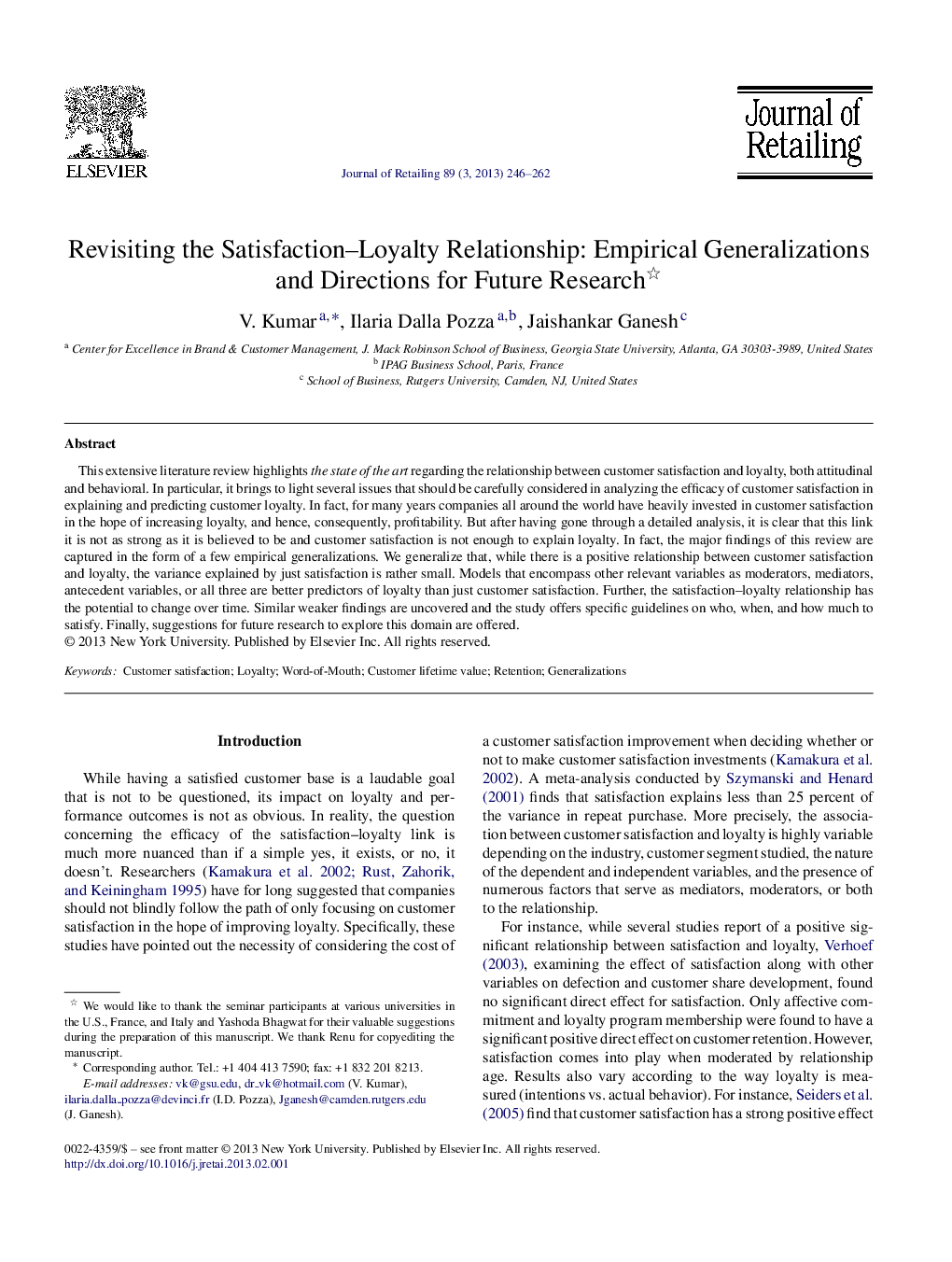| کد مقاله | کد نشریه | سال انتشار | مقاله انگلیسی | نسخه تمام متن |
|---|---|---|---|---|
| 886316 | 913049 | 2013 | 17 صفحه PDF | دانلود رایگان |

▶ There is a positive relationship between customer satisfaction and loyalty. ▶ The variance explained by just satisfaction on loyalty is rather small. ▶ Moderators, mediators, antecedent variables, or all three are better predictors of loyalty than just customer satisfaction. ▶ The satisfaction–loyalty relationship has the potential to change over customer life-cycle. ▶ The study offers specific guidelines on who, when, and how much to satisfy.
This extensive literature review highlights the state of the art regarding the relationship between customer satisfaction and loyalty, both attitudinal and behavioral. In particular, it brings to light several issues that should be carefully considered in analyzing the efficacy of customer satisfaction in explaining and predicting customer loyalty. In fact, for many years companies all around the world have heavily invested in customer satisfaction in the hope of increasing loyalty, and hence, consequently, profitability. But after having gone through a detailed analysis, it is clear that this link it is not as strong as it is believed to be and customer satisfaction is not enough to explain loyalty. In fact, the major findings of this review are captured in the form of a few empirical generalizations. We generalize that, while there is a positive relationship between customer satisfaction and loyalty, the variance explained by just satisfaction is rather small. Models that encompass other relevant variables as moderators, mediators, antecedent variables, or all three are better predictors of loyalty than just customer satisfaction. Further, the satisfaction–loyalty relationship has the potential to change over time. Similar weaker findings are uncovered and the study offers specific guidelines on who, when, and how much to satisfy. Finally, suggestions for future research to explore this domain are offered.
Figure optionsDownload as PowerPoint slide
Journal: Journal of Retailing - Volume 89, Issue 3, September 2013, Pages 246–262